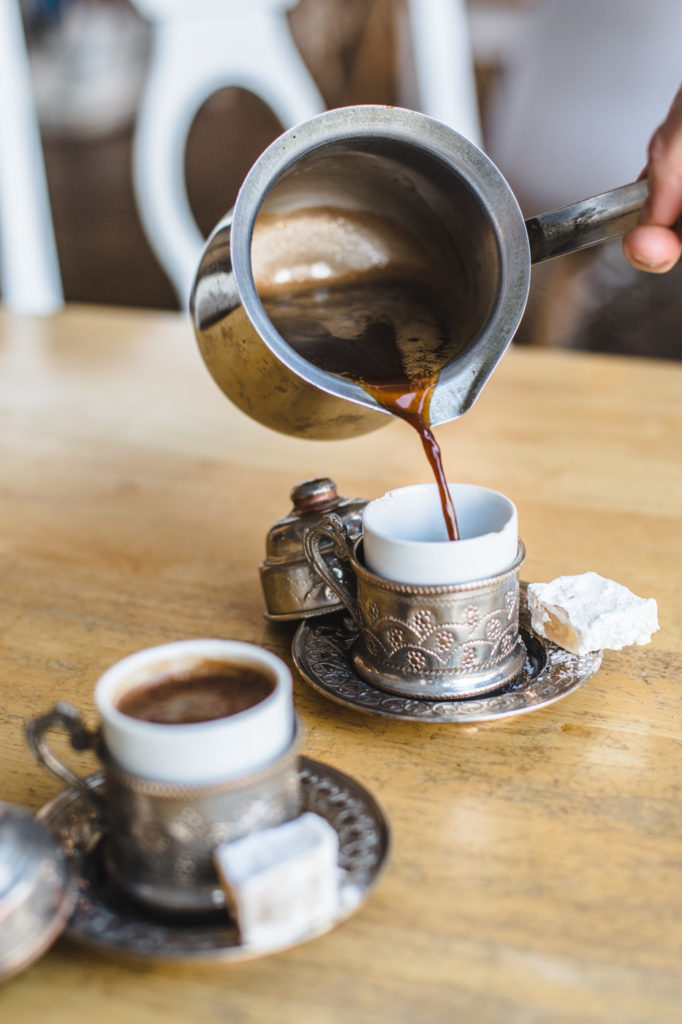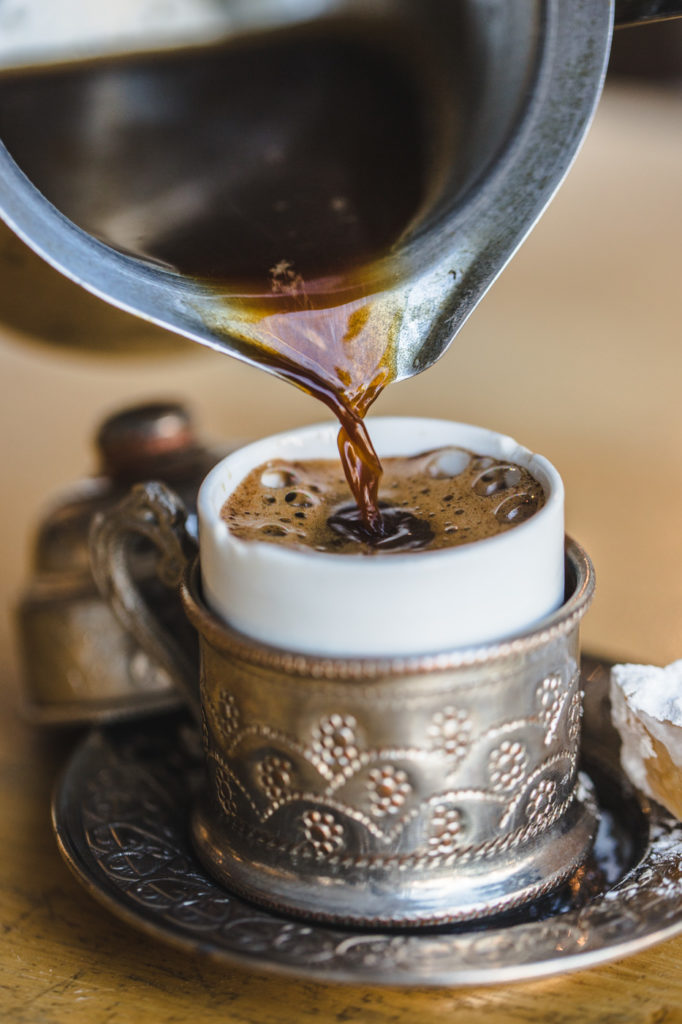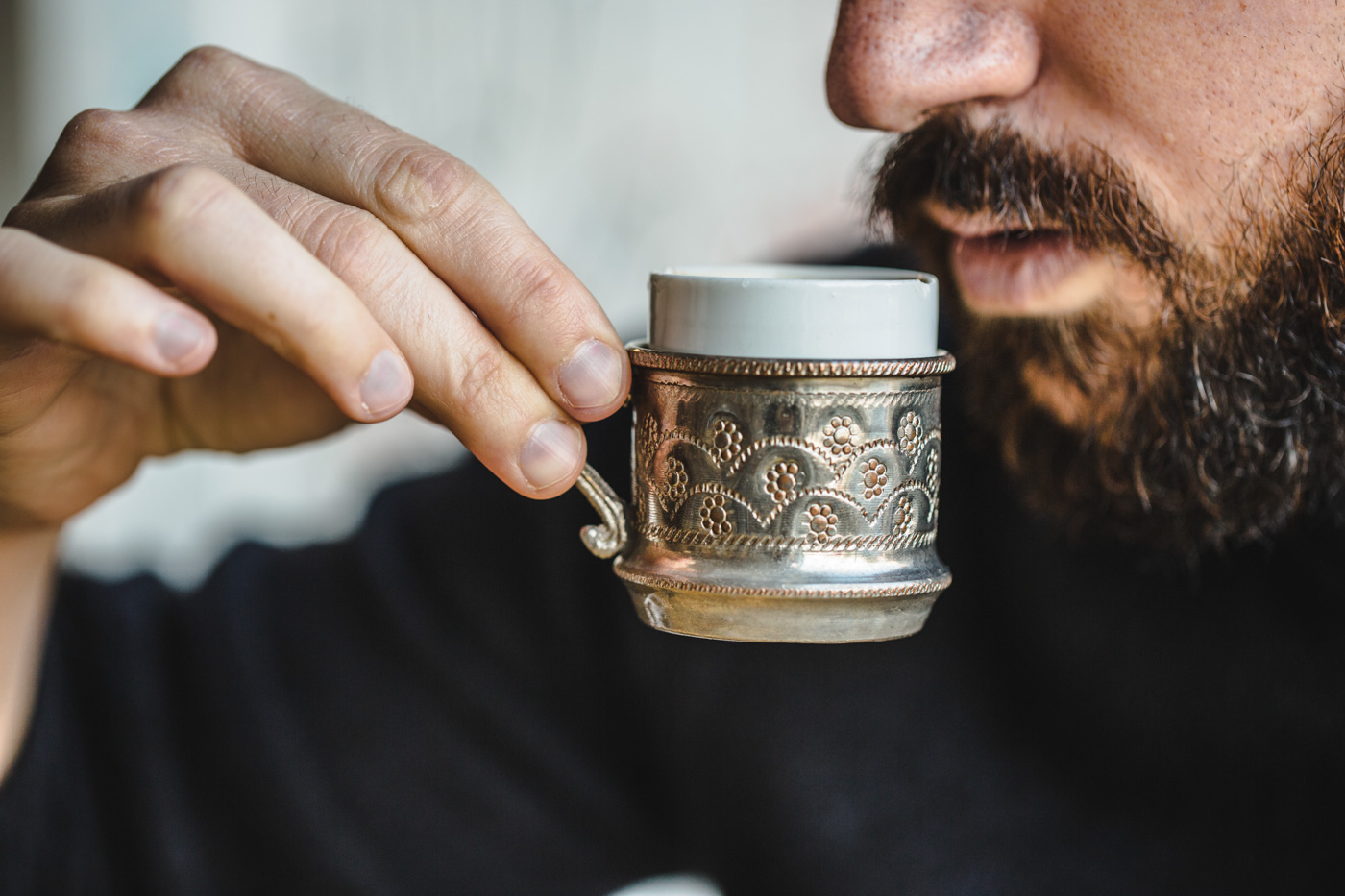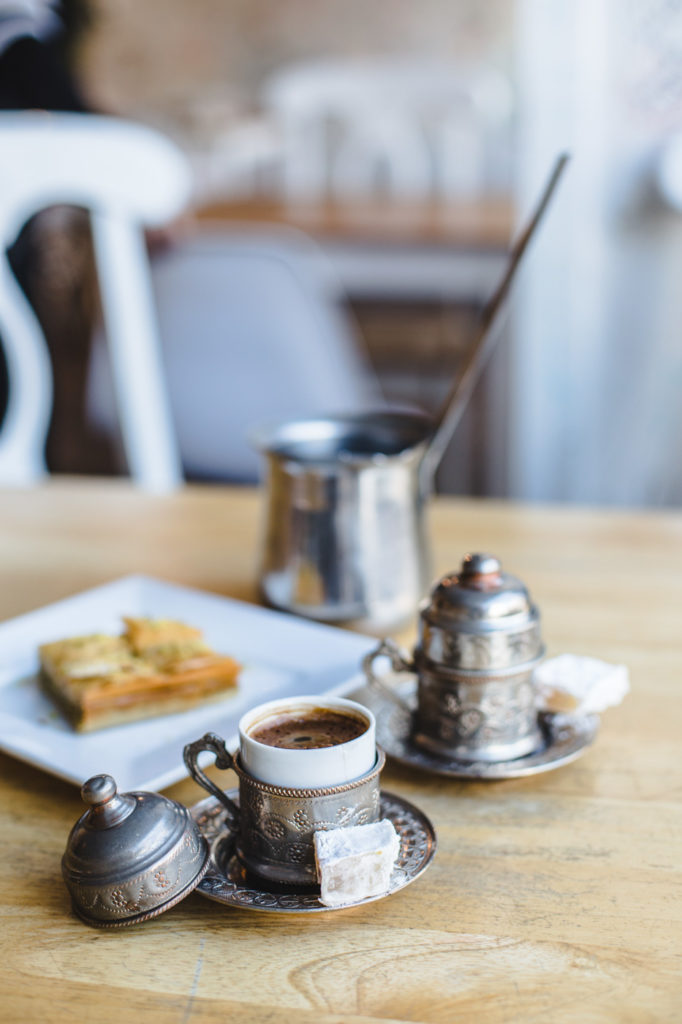Depending on which legend you believe, the first cup of coffee may have been brewed in the Ethiopian highlands (where the coffee plant is native), or a few miles across the Red Sea in Yemen. In either legend, it is a monk who boils the coffee berries and samples the resulting brew, discovering that it enabled him to stay awake through the night and focus on his prayers.
Whatever the truth, what is known is that by the early sixteenth century, coffee was being brewed and consumed throughout Yemen—widely enough that Ottoman tax-collectors took note and brought the bean back to the royal palace in Constantinople (present-day Istanbul). Within twenty to thirty years, coffee became popular enough in the Ottoman capital that around 1554, two Syrians opened the world’s first known coffee shop, Kiva Han, in Constantinople. From there, coffee and its culture only continued to spread around the globe. There are accounts of coffee shops in Venice as far back as the early 1600s—the result of trade with Arab merchants—while the coffee plant itself had been transported by the Dutch to be grown in Ceylon and Java. In 1652, Pasqua Rosée (a native of Ragusa, in modern day southern Croatia) opened London’s first documented coffeehouse along St. Michael’s Alley in the Cornhill ward. The coffeeshop had no name and the sign out front was an image Rosée’s head and half his body; a plaque commemorates the shop to this day. By 1676, coffee culture made its way to the Americas when John Sparry opened a coffee house in colonial Boston.
But what all these cafés served was not the filtered coffee much of us recognize from our breakfast table—let alone an espresso or a triple mocha iced latte with soy available at our corner café. Rather, what these first coffee houses brewed was a thick, muddy liquid that is still prevalent today throughout much of the Arab world, North Africa, and countries surrounding the Black Sea.



In Turkey, it is called Turkish coffee, but elsewhere, the scars of Ottoman colonization (and the tensions of contemporary international politics) have relabeled it to local preference. In Greece, it is known as Greek coffee. In Armenia, it’s called Armenian coffee. It’s Bosnian coffee in Bosnia. And in the Middle East, it is simply referred to as black coffee. To be a-political, you can call it ibrik coffee (one of the names for the specialized vessel used in the brewing method—though still a Turkish word). Yet, for much of Western Europe and North America, it is the original name, Turkish coffee, that has stuck.
“It’s the oldest method of brewing coffee,” Turgay Yildizli, the 2013 World Coffee Events World Cezve/Ibrik Champion and founder of Specialty Turkish Coffee, tells me. “The biggest difference from other brewing methods is that there is no filtration.” In a cezve (the traditional small brass/copper pot with a long handle also referred to as an ibrik or finjan), finely ground coffee is added to water, brought to a boil, and poured straight into the cup. There is no paper filter or metal mesh between what is made in the cezve and the final drink that is served. The grounds are left in the brew creating a muddy residue at the bottom of the cup.
“The problem [with no filtration] is you can’t stop extraction,” Yildizli says. “Turkish coffee can get thirty-five to thirty-eight percent extraction, when the ideal for coffee, to taste all the flavors, is twenty, maybe twenty-two percent.” This over-extraction, along with the frequent practice of bringing the brew to a boil two, or even three times makes the coffee taste burnt and bitter. “This is why sugar, cardamom, even cinnamon is mixed into the drink,” Yildizli adds.
So does this ancient brewing method hinder the flavor of the resulting coffee? Is Turkish coffee cursed to an eternity of over-extraction and a resulting harsh taste? “No,” Yildizli responds. “It is possible to brew better tasting coffee with the correct equipment, water, et cetera. But it’s hard to change people’s palates. This flavor is like tradition.”
According to Yildizli, one key change for better flavor is the beans used. “Most Turkish coffee around the world today is made with very poor quality Brazilian beans,” he says. “There is no standard bean for Turkish coffee. I like Ethiopian beans because they have acidity but are not sour.” From there, Yildizli recommends grinding the beans a little more coarsely than usual, somewhere between an espresso grind and a filtered grind, and bring the coffee to a boil only once.
But one question still remains: why did European coffee houses stop serving Turkish coffee? And why is this original form of coffee largely unknown in America, even as the specialty coffee scene grows?
“I have a personal theory,” Yildizli theorizes based on the old European coffee houses of the seventeenth and eighteenth centuries. “Someone probably complained about the grounds in the liquid. So, whoever filtered out the grounds probably did it the first time with cloth.” With the grounds now filtered out of the final product, coffee extraction became more controllable, and the resulting flavor was likely more smooth, if not more balanced. From there, filtration caught on as the standard brewing method, and the first paper filter was patented by a German woman, Melitta Bentz, in 1908—around the same time the espresso machine was created.
As filtered coffee became the standard, Turkish coffee—the old style, the unrefined method—was all but forgotten. But if the brewing method has a poor reputation in the specialty coffee world today, it has earned it unfairly. Brewing with a cezve can yield as balanced a product as anything made with a $50 thousand espresso machine, and the process is far simpler. So will this original form of coffee make a triumphant resurgence to the world stage?


In places like Thailand, Malaysia and China, Turkish coffee is quickly gaining popularity. “There is a café in Taiwan that just serves Turkish coffee. It’s called Kopi Ibrik,” Yildizli says. “But the U.S. needs a spark—some influential coffeeshop or barista to introduce it to their menu. This will change things.”
Maybe this trend is already beginning to take hold. La Colombe sells ibriks at its cafés, even if the brew itself isn’t on their menu. And the continued growth of the World Cezve/Ibrik Championships has helped bring new equipment and specialized coffees to the method, along with far-reaching recognition.
“When I go to conventions and serve my coffee, people aren’t expecting this balanced flavor from Turkish coffee,” Yildizli says. “George Howell recently tried my coffee at an expo in New York and said ‘This is mind-blowing. I’ve never had Turkish coffee like this.’”
It’s the same reaction Yildizli and others hope to get from more coffee drinkers.
——
Photography shot on location at Mama’s Secret Bakery & Cafe in Los Angeles.







Our comments section is for members only.
Join today to gain exclusive access.